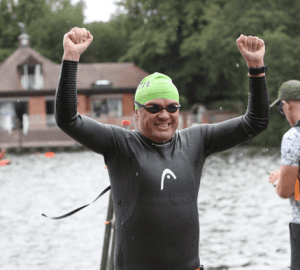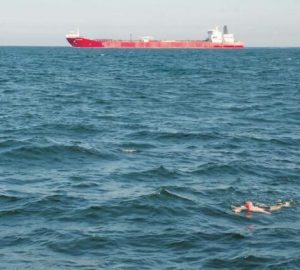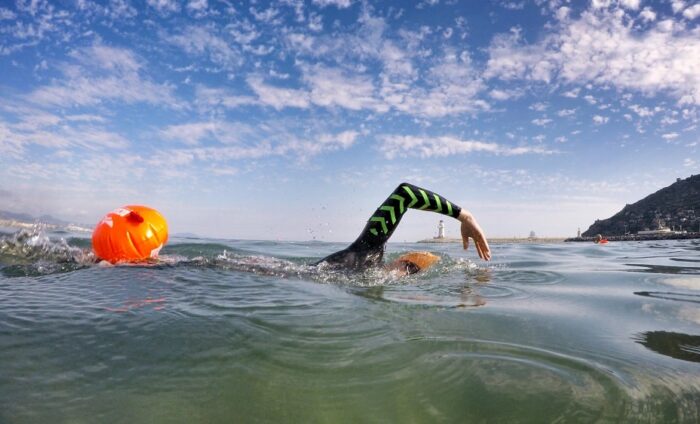
How to swim one million metres in a year
To swim a million metres in a year you need to average 83,333.3m per month or 19,230.8m per week. If you swim every day, you’ll need to average 2740m per day (although it will only be 2732.2m in 2020 because it’s a leap year). Most likely you’ll want at least one day off per week to rest and recover. In which case, the average per swimming day jumps to 3205m. If you swim five days per week, it will be 3846m per session, and at four days per week it’s 4808m.
It’s a big but achievable target for the year. It combines a clear goal with a straightforward process. Essentially, work out how many metres you need to swim each day (factoring in rest days) and then go and swim them.
The million metre challenge works well with your other swimming goals. Swimming fitness depends to a large extent on the amount of swimming you do and the frequency of those swims. Within reason, the more you swim and the more frequently you swim, the fitter you get. The limiting factor for many of us is available time and fitting in swimming with work and other commitments. The million metre challenge is a great way to add purpose to your training, keep you focused and help you prepare for any other swimming challenges you set yourself. I started 2019 with the aim of training for the 21+km Vidösternsimmet and the million metre challenge was another incentive to keep logging the necessary training miles. It also helped me to a lifetime personal best for 800m FC at the National Masters Championships.
Here are a few tips if you want to try the Million Metre Challenge in 2020:
- Set up a spreadsheet or similar to keep track of your distances (or download this spreadsheet and use as a template)
- Try to get ahead of your monthly target in the early months of the year. Not only is this motivating, it helps build a buffer against disruption to your training in the summer months due to events and holidays.
- At the same time, don’t go crazy in January, especially if this involves a big step up in distance for you as you don’t want to get injured or burnt out.
- To achieve consistency, you need to look after yourself. Sleep well, eat healthily, do your injury prevention and mobility exercises. Listen to your body.
- Five to six slightly shorter swim sessions per week works better than four or fewer long ones.
- Find training partners! It will make it a lot easier.
- Feel free to include your races and open water challenges in your total distance calculations.
- If you’re looking for training session ideas, scroll down to see the ones I did in the first half of 2019.
How I swam a million metres in 2019
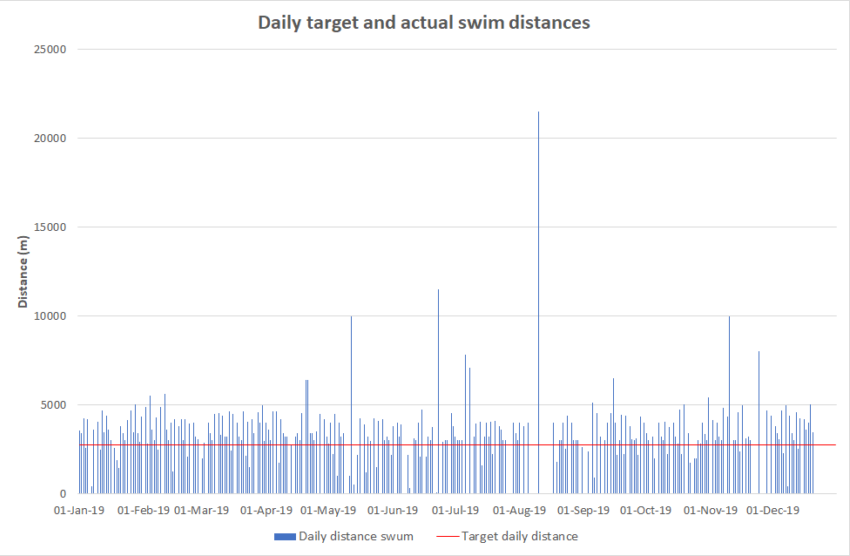
The spike in the middle was the 21.5km Vidösternsimmet. I then spent several days recovering, so it actually brought my average distance down.
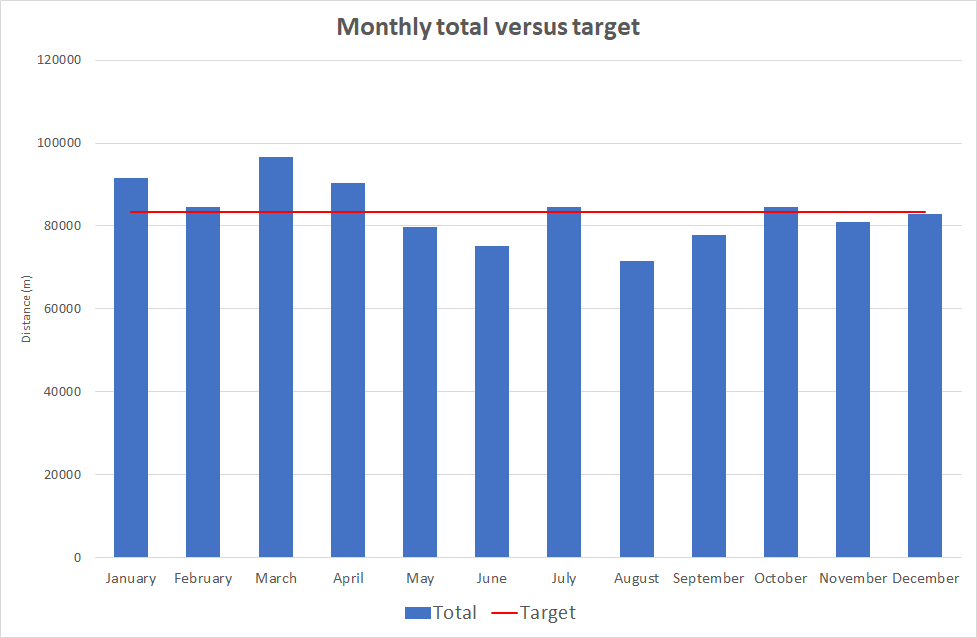
I was ahead of the monthly target at the beginning of the year and then had a few months in the summer where I was below due to work, races and holiday.
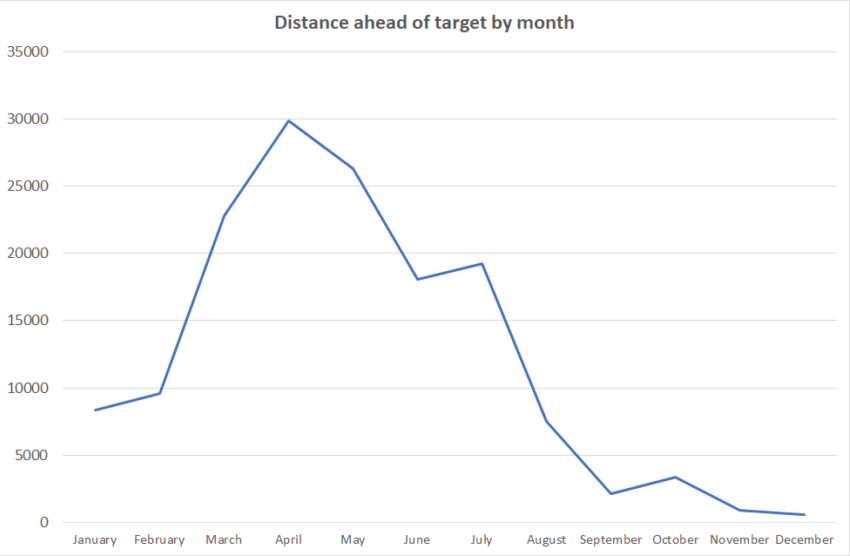
By the end of April, I was nearly 30,000m ahead of target. I didn’t manage much swimming in August.
Links to the training sessions I did in the first half of 2019
If you’re taking on the the million metre challenge this year, or if you have a different 2020 swim goal, then be sure to join our Million Metre Challenge Facebook group.
We’ll be sharing some training plans and technique advice, as well as some inspirational content to keep you motivated along the way.
Feel free to post any questions you have about your own 2020 swim goals, to share your progress with the group and to follow one another’s journey throughout year!




